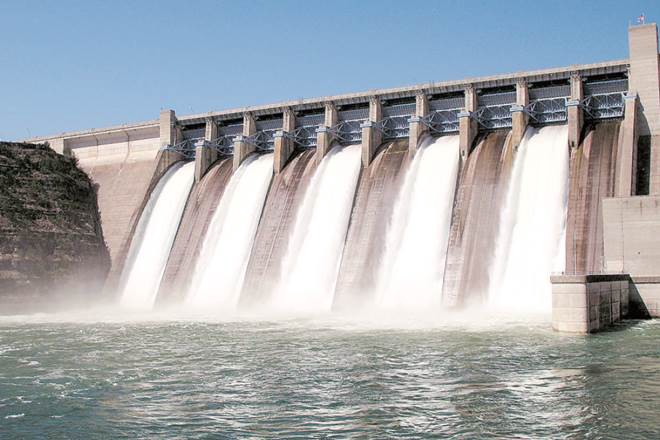Full List of Power Stations in Nigeria & Locations
Nigeria’s demand for more power has soared. It has progressed to the point that more watts and voltage of electrical current are required to power each home, organization, and even government offices.

The government and private enterprises have erected electricity plants all around the country to accommodate this demand. We present a list of power plants in Nigeria, their locations, and the amount of electricity they produce in this post.
A power station is a type of industrial unit that produces electricity for usage in homes and businesses. The plant features turbine generators that run fuels like water, coal, oil, and natural gas to distant nuclear elements to produce electricity. The country’s available generating power plants have the ability to generate up to 5000 megavolt of electricity.
Owing to the complexity of the energy sector, the majority of power plants are controlled by the federal government, with some held by wealthy individuals and states. Independent Power Producers (IPP) are those owned by individuals and state governments, whereas the National Integrated Power Project (NIPP) is administered by the federal government.
FULL LIST OF POWER PLANTS IN NIGERIA: LOCATIONS & CAPACITY
The following is a list of all operational electricity generating power stations in Nigeria, along with their respective capacities.
KAINJI POWER STATION
The Kainji power station is the best – preserved power generating plant. It is a hydroelectric system that generates energy using water from the Niger River.
The station, which is located in Niger state, was built in 1968 and has a 760 megawatt capacity.
SHIRORO POWER STATION
This is another operational power station in the state of Niger. It’s close to Kainji and is likewise fueled by hydroelectricity. Shiroro station can generate 600 megawatts of electricity. It was founded in 1990 to address the demand for improved power generation in the Niger.
JEBBA HYDRO POWER STATION RESERVOIR
This power plant is functioning and belongs to the same category as the others. It also uses hydro energy to generate up to 576.8 megawatts of power. It was founded in 1985 in the Niger State region of Jebba.
SAPELE POWER STATION
The Sapele power station in Ogode, Delta state’s Sapele area, began construction in 1978 and was finished three years later. To produce currents of up to 1020 megawatts, the state employs simple cycle gas and gas-fired turbines.
EGBIN (LAGOS) POWER PLANT
This is the country’s second operational energy generating plant. It’s in Ikorodu, Lagos State, and it generates electricity for the metropolis. The partially functioning plant generates around 994MW. Egbin station first opened its doors in 1986.
AFAM I-IV &V POWER PLANT
The Afam power station provides electricity to the host state of Rivers as well as the adjacent states of Akwa-Ibom and Bayelsa. The facility uses a basic gas turbine to generate 977 megawatts of electricity.
TRANSCORP – UGHELLI POWER PLANT
This is yet another power plant in Delta. It has a capacity of 972 megawatts and is powered by a simple cycle gas heated turbine. This power plant was built in four stages: the first was in 1966, the second in 1975, the third in 1978, and the fourth in 1990.
GEREGU I POWER STATION
This station is in the state of Kogi. It has a capacity of 414 megawatts and is powered by a simple cycle gas turbine. In 2007, the construction of this edifice was completed.
OMOTOSHO I POWER STATION
This plant is operational and was built in Ondo State to suit the region’s electrical demands. It has a 335 megawatt capacity and runs on a simple cycle gas turbine. It was first released in 2006.
OLORUNSOGO POWER STATION
This power station is of the NIPP type, and it was built in 2007. It works on the basis of a simple cycle method. The power plant is located in Ogun State and has a capacity of 335 megawatts.
AFAM VI POWER STATION
Afam, Rivers state, still has another working power plant. It runs on a gas turbine with a combined cycle, which is extremely eco-friendly.
The power station has a capacity of 642 megawatts. It began operations in 2010 to supplement the region’s power generation.
KWALE OKPAI POWER STATION
Agip Oil Company owns and operates this private power station. The station, which has a capacity of 480 megawatts, is powered by a combined cycle gas turbine. The company was founded in 2005 in Delta State’s oil-rich Niger Delta region.
IBOM POWER STATION (IPP)
The Ibom Power Company is an independent power generator based in Ikot Abasi. It runs on a basic cycle gas turbine that uses fossil natural gas as fuel. The state government launched the power plant in 2009, and it has a capacity of 600MW.
AES BARGE INDEPENDENT POWER STATION
This power station is active and was built in Lagos State in 2001. It uses a simple cycle gas turbine and has a total capacity of 270 megawatts.
OMOKU POWER PLANT
This plant has the same characteristics as the previous one, but it has a capacity of 150 megawatts. In the year 2001, it was established in Rivers State.
RIVERS POWER STATION
The Rivers State Government owns this energy producing plant. It operates on a gas-heated system and has an average capacity of 180 megawatts of electricity.
ABA POWER GENERATOR
It was built in 2012 and is located in Aba, Abia State. It runs on a simple cycle gas turbine system. This power plant has a capacity of 140 megawatts of electricity.
GEREGU II POWER PLANT
Geregu power station is a federal plant in Kogi state that was built in 2012. This station’s operating principle is also based on a simple gas turbine technology. It has a 434MW capacity.
TRANS-AMADI POWER PLANT (IPP)
This power plant has a capacity of 136MW and is powered by a gas-fired system. The factory is located in the Rivers State town of Trans-Amadi.
OLORUNSOGO POWER PLANT
This independent power station is located in Ogun state, specifically in Olorunsogo. It is powered by a combined gas turbine system. The plant has a capacity of 675 megawatts, which is sufficient to supply the region’s electrical needs.
EGBEMA POWER GENERATOR
The federal government launched the Egbema power project in 2013 with the intention of adopting a simple cycle gas turbine system. It has the capacity to generate 338 megawatts. This power station is located in the state of Imo.
SAPELE POWER STATION
This plant is another one that is up and running in Sapele, Delta state. This one stands out from the rest because it has a 450MW capacity. It debuted in 2012 and is powered by a simple cycle gas turbine.
IHOVBOR POWER STATION
This federal government-owned power plant in Benin has been producing electricity for the Edo region since 2013. It has a capacity of 450 megawatts.
CALABAR POWER STATION
Calabar’s generating station is NIPP (see above) and operates on a simple gas turbine technology. It has a capacity of 561 megawatts of electricity.
MAMBILLA POWER PLANT
This is among the few power plants in the country’s northern reaches. It is currently being developed in Taraba state and is expected to be released soon.
ZUNGERU POWER PLANT
This station was built by the Federal Ministry of Mines, Industry, and Energy to generate 700MW of electricity using a water-powered hydroelectric system.
DADIN KOWA HYDROPOWER STATION
This is just another electric power plant with a capacity of 29 megawatts that will utilise hydroelectric electricity from the river. It is presently under construction.
AZURA POWER PLANT (IPP)
This facility is located in Edo State’s Benin City. It is currently under development and will operate a gas tribune with a simple cycle capable of generating megawatts of energy when completed.
OKPAI POWER GENERATOR PHASE 2
The power station produces electricity with a 480 megawatt power rating. It’s an initiative aimed at resolving the region’s excruciating power fluctuations.
QUA IBOE POWER STATION
The Qua Iboe power facility is positioned in the oil-rich state of Akwa-Ibom. It is expected to be completed in time to fulfill the state’s shortfall in electricity supply from the Ibom power plant, which is already operational.
CONCLUSION
Nigeria’s power usage seldom declines, but rather rises. As a direct consequence, the country’s shortage of available power plants has become urgent. As a result, the list of power generating plants is unlikely to finish, as there are many more needed to fulfill Nigeria’s woeful electrical supply.
All dully registered power plants in Nigeria are operational, and their capacity may be found in this article.
